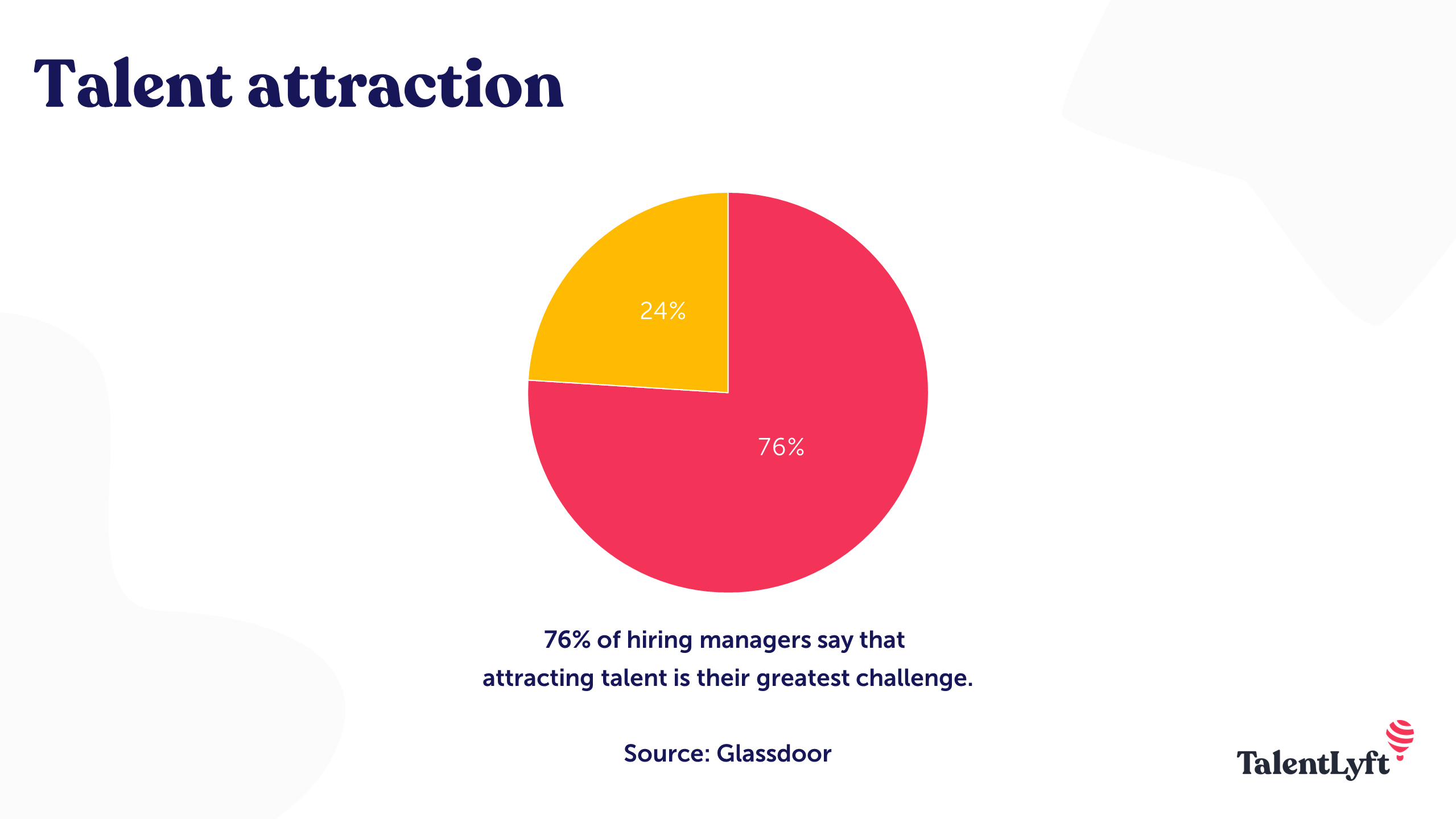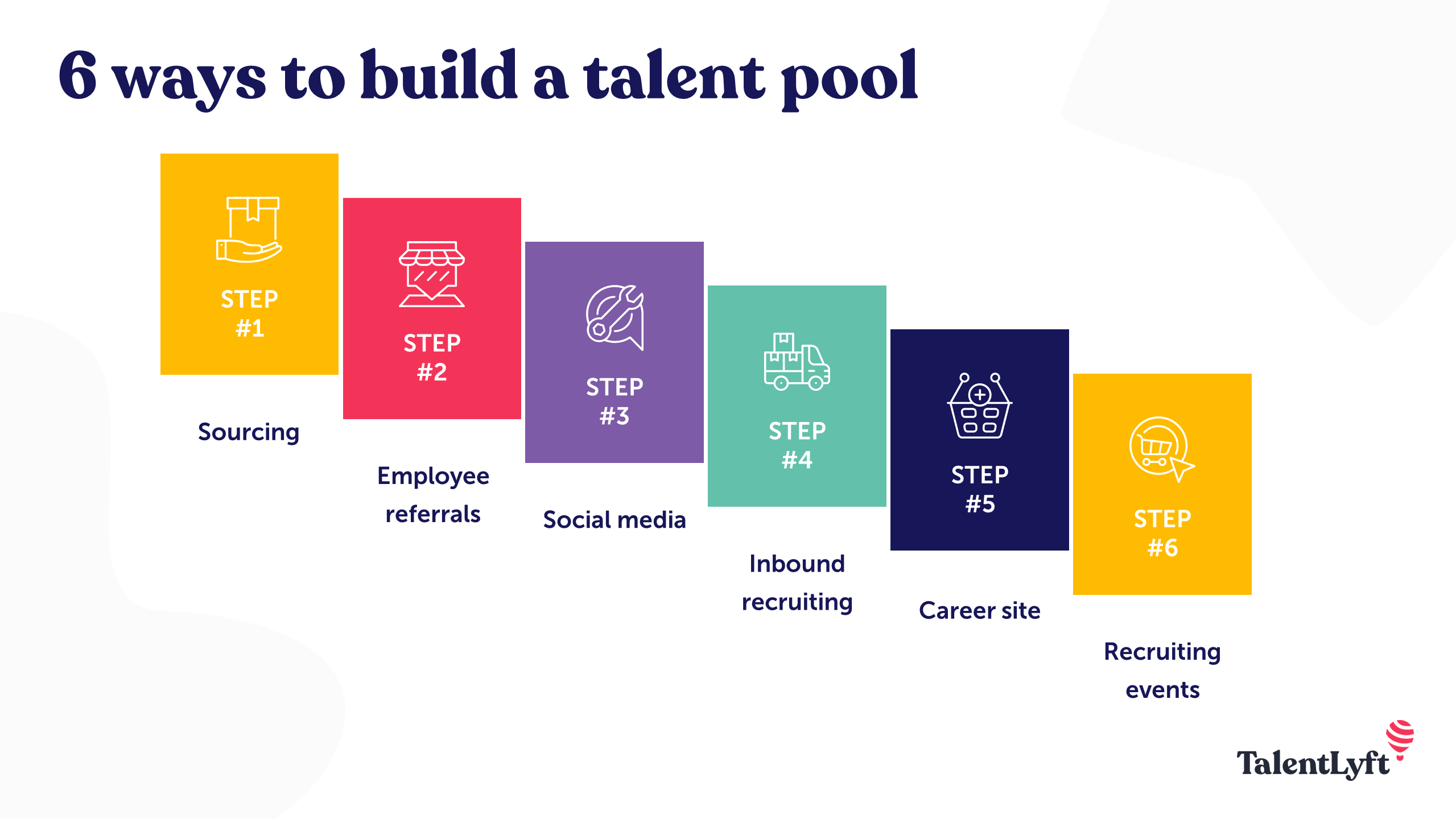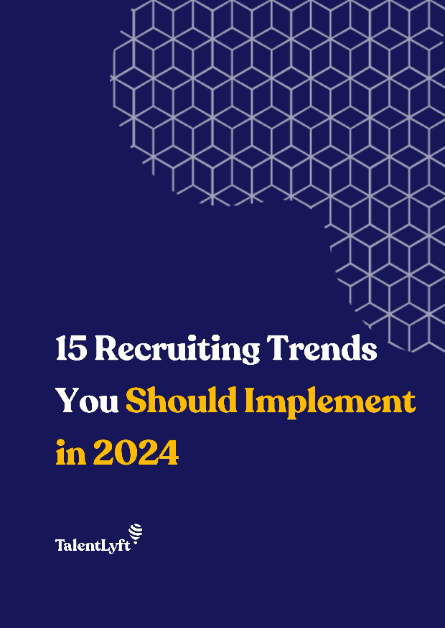
Building a talent pool is a great way to secure high-quality candidates for your job openings faster and cheaper. If you are an HR manager or employer looking to get started with building your talent pool, here is everything you need to know.
Building a talent pool is a great way to secure high-quality candidates for your job openings faster and cheaper. If you are an HR manager or employer looking to get started with building your talent pool, here is everything you need to know.
A talent pool is a database of candidates profiles interested in working for your company.
It is a group of suitable candidates who have expressed interest in you as their employer.
Talent pools consist of candidates that have applied for your open job positions, but also sourced, referred candidates, silver medallists and other candidates that have willingly joined your talent network (for example, in an inbound way).
Recruiters and HR Managers use talent pools as a reserve of interesting talent they can turn to when they need to fill a certain position.
According to Glassdoor’s HR & Recruiting Stats for 2018, 76% of hiring managers say that attracting top talent is their greatest challenge.

This is because the job market has changed.
The demand for talent now exceeds the supply, and there are no indications that this trend will revert anytime soon.
A McKinsey Global Institute study suggests that employers in Europe and North America will require 16 million to 18 million more college-educated workers in 2020 than are going to be available.
This means that the talented candidates now have the possibility to pick and choose companies they want to work for.
On the other hand, employers must compete with each other if they want to snatch high-quality candidates.
Because of these changes in the labor market, the way companies recruit talent has also changed.
The old “post and pray” method is not enough anymore. If they want to fill their positions with top talent, employers must shift from passive to proactive recruiting.
Building talent pools is one of the most important proactive recruiting tactics in talent acquisition.
Building talent pools will help you stay ahead of your company’s talent needs.
Instead of waiting until you have open job positions, you can recruit “in advance”, for the future hiring needs of your company.
That way, at the moment you have to fill certain positions, you already have a reserve of high-quality candidates to choose from.
Imagine if every time you had a job opening, you had a pool of talent from which you can just pick the best one! 😲 Sounds great, right? 🙂
It means you could fill your open positions much easier and faster with better candidates and no money spent on advertising.
In other words, talent pools have 3 main benefits:
The first thing you need to do if you want to build an effective talent pool is to define what type of candidates you want to have in your talent pool.
In other words, you have to define your “talent pool worthy” candidate.
The definition of a “talent pool worthy” candidate will vary among different companies and their future hiring needs.
This is why you need to define what exactly a “high quality” candidate means for your business and your company, not only right now but also in the future.
There are 6 most effective ways of filling your talent pool with “talent pools worthy” candidates:

1. Sourcing tools
Sourcing tools are a great way to find and get in touch with high-quality candidates.
Sourcing tools are especially important because with them you can reach passive candidates, the ones that are not actively looking for a job but would be willing to accept a better offer.
Modern sourcing tools perform web search scans of millions of online profiles to retrieve passive and active candidates’ details including email addresses, resumes and more. The profiles that you choose are then automatically added to your talent pool.
If you are recruiting in Europe, keep in mind that your sourcing strategy must be GDPR compliant.
2. Referrals
Employee referrals are another great way for building talent pools.
According to LinkedIn research, companies can expand their talent pool by 10 times when recruiting through their employees’ networks.
Besides, referred candidates are known to be the best employees that stay longest with companies.
They also take the shortest to hire and onboard and are less expensive to hire.
3. Social media campaigns
Social media is a great way to reach your potential candidates and invite them to join your talent pool.
Here is a great example of Facebook post inviting candidates to join their talent pool by Trivago:
Keep in mind that though that inviting potential candidates to join your talent pool should be a part of a comprehensive social media recruiting campaign.
Before inviting your potential candidates to join your talent pool, you need to give them a reason to consider your company as their next employer of choice.
You will do that by using social media to promote your Employer Brand and showcase your company culture.
4. Inbound recruiting
Inbound Recruiting is attracting candidates to willingly join your talent pool because of the awesome content you are providing.
For example, you may have a team blog on your career site that talks about interesting projects you are working on.
Or you may have your expert employees writing informative blogs about the new trends and best practices in your industry.
If you offer interesting and relevant content, you can add a form to your website that interested contacts can fill out in order to receive your company’s newsletter and join your talent pool in an inbound way.
5. Landing pages on your career site
The simplest way to grow your talent pool is to create a special landing page on your career site that will serve as an invitation for joining your talent pool.
Make sure that the process of filing an application form for joining your talent pool is as simple and short as possible.
Here is how Trivago does it, offering potential candidates to simply join their talent pool by signing in with their LinkedIn account:
6. Talent networking events
Events are another great way to connect with your candidates.
But where to start?
With your candidate persona of course.
Find out what type of events your candidate persona prefers. You need to be where your talent is!
There are many different events to choose from: fairs, forums, conferences, meetups, workshops, seminars, training, hackathons, career fairs, information sessions, open doors, breakfast sessions, after work meet and greets, career workshops, etc.
Find the right events and join in.
If you have the time and resources, you can even organize your own talent networking event.
Your company can sponsor, co-host or host many different talent networking events.
And it doesn’t have to be a time consuming and costly endeavor, especially if you decide to organize an online event such as live chat, webinar, online career fair, etc.
All these events are a great opportunity to target your candidate persona and get in touch with high-quality people who could be interested in joining your talent pool.
Filling your talent pool is just a first step in building a successful talent pool.
In order to turn a list of potential candidates into a vibrant talent community, you should follow these 6 steps:

The only way to send highly relevant and useful content to the candidates in your talent pool is to segment it.
This means that you will divide the candidates from your talent pool into different groups.
The criteria for segmentation of the talent pool should be set in accordance with each company’s unique hiring needs and talent acquisition strategies.
Most companies segment their talent pools by the candidate's profession and interest.
Another, more advanced, example of talent pool segmentation is by the different stages of their candidate journey.
Remember, your goal is to offer the most personalized experience for each candidate as possible.
In order to set realistic expectations, be clear with candidates about what they can gain by joining your talent pool.
Explain how and when you will communicate with them and in which cases you will contact them.
Also, make sure candidates know exactly what information they need to provide in order to join your talent pool.
Explain how you will store and use the information they provide and how long you will keep it.
Inform them about their rights and privacy guidelines.
Regular communication is the key to maintain a well-structured talent pool.
In order to keep your candidates engaged, you have to ensure regular communication with highly relevant and useful information and content.
Define and execute targeted campaigns to engage your potential candidates.
Your content should be a mix of blog posts, webinars, videos and photos.
Create compelling informational content about your company and your industry and share it via email newsletter.
Have your employees write about the exciting projects they are working on, or share their experience of working at your company.
You could also provide a glimpse into your company culture by sharing photos of your office and company events.
Oh, and don’t forget to highlight your new job openings!
If you want to take advantage of all the benefits a talent pool can offer, then you should do more than send an occasional email blast.
Once you gathered all that great people in your talent pool, you should proactively reach out to them.
Your recruiters and HR managers should take initiative in building a vibrant professional community.
They should create online and offline events in order to foster direct, two-way communication among your potential candidates and your employees.
For example, your HR managers and recruiters can:
All these events should be presented as a great opportunity for your potential candidates and your expert employees to network and discuss interesting industry-related projects and topics and share their knowledge and experiences.
Make sure you keep your talent pool database up-to-date.
You can’t just fill your talent pool database with profiles and let it be - you need to actively maintain it.
Talent moves quickly - they could change their job, move to another city or state, get an additional qualification, or even change their phone number!
If you want to able to contact the right candidate at the right moment with the right offer, you need to be on top of things.
In order to do that, you should regularly check in with your candidates to see if any of their information changed.
In order to identify the best strategies for building and maintaining your talent pool, you need to track and measure every step of your process.
It is the only way to get valuable insights and improve your talent building strategies.
Besides tracking the overall size and quality of your talent pool, you should also assess your sourcing strategies and measure the ROI of your communication with your candidates.
You can do that by tracking relevant metrics, such as the open rate of your email campaigns, social media statistics, attendance of your talent networking events, etc.
Finally, don’t forget to ask your candidates for feedback.
The easiest way to do it is to conduct a candidate engagement survey and candidate experience survey.












